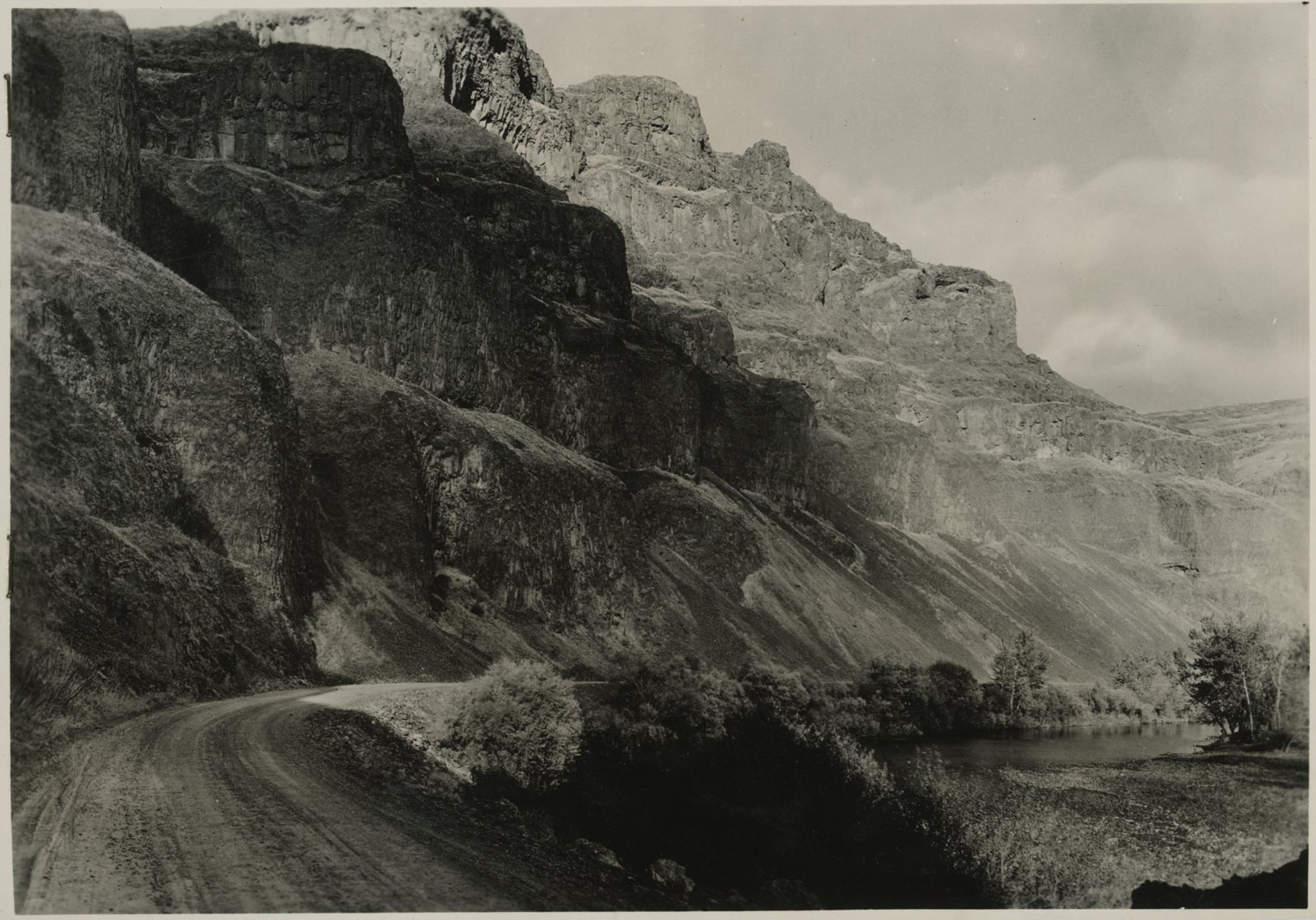The Strawberry Mountains—among the highest peaks in the Blue Mountain Range—extend east-west through northeast Oregon in Grant County, south of the John Day Highway in the Malheur National Forest. Along with the Aldrich Mountains to the west, the Strawberry Mountains have been uplifted and shoved north along the now-inactive John Day fault. The range is split by a major fault along Indian Creek that has uplifted the much older rocks to the west.
The geology of the eastern portion of the range is completely different from the western end. On the east, Miocene age (14-million year-old) volcanic rocks predominate. The range’s highest peak, Strawberry Mountain, at 9,038 feet, commands the landscape. This portion of the Strawberry Mountains was once a volcano that may have resembled Mount Hood, whose dominant volcanic rock is andesite. The source of these rocks is not well understood, but it is likely that they are related to the Powder River Volcanics and the Dooley Mountain eruptive center. Like those volcanics, the andesite of the Strawberry Mountains was generated as a last gasp of Columbia River basalt-related volcanism in eastern Oregon.
The western side of the range consists of the Canyon Mountain Complex, a 278 million-year-old slice of sea floor. These rocks consist principally of iron-rich gabbro and magnesium-rich peridotite. They are part of the Canyon Mountain Complex, a layered “ophiolite” sequence that once formed the roots of a chain of sea-floor-based volcanoes much like the modern Aleutians, volcanic islands that stretch southwest from Alaska, or the Marianas in the western Pacific Ocean. The complex is an enigmatic component of the Baker Terrane, one of the Northwest’s accreted terranes that was added to the continent about 140 million years ago and that ultimately built Oregon’s first crust.
During the Pleistocene, or Ice Age (about 2 million to 12,000 years ago), alpine glaciers sculpted the Strawberry Range. Strawberry Lake occupies a tarn—a small, circular lake at the head of a glacier—and the trail to it clambers up the steep face of the terminal and recessional moraines. The north face of Canyon Mountain was hewn by glacial ice, and the long valley of Pine Creek bears a telltale, characteristic U shape of a glacially carved feature.
The western Strawberry Mountains have yielded significant ore deposits and were the locus of the first big gold discovery in eastern Oregon. In June 1862, miners who ventured north from California discovered placer gold in Canyon Creek, on the western edge of the Strawberry Range. About $26 million in gold was extracted from placer deposits and hard-rock mines on Little Canyon Mountain. As a result, Chinese miners and laborers flocked to the area. Today, the Kam Wah Chung Museum in John Day is a reminder of their presence in the basin.
The discovery of gold and the rapid growth of population led to settlement by ranchers and the cultivation of the John Day Valley. During World War I and, to a lesser extent, World War II, chrome was mined from the northern flanks of Canyon Mountain and the western flanks of Baldy Mountain.
Between 1995 and 2008, forest fires repeatedly scorched the landscape, and fires continue to flare up in the wilderness area, often caused by lightening strikes. Much of the Strawberry Range is protected as the 68,700-acre Strawberry Mountain Wilderness, designated by the Wilderness Act of 1964 and managed by the US. Forest Service.
-
![Strawberry Mountains (John Day in foreground), 1952]()
Strawberry Mountains (John Day in foreground), 1952.
Strawberry Mountains (John Day in foreground), 1952 Courtesy Oreg. Hist. Soc. Research Lib., neg. no.006837
Related Entries
-
![Blue Mountains]()
Blue Mountains
The Blue Mountains, perhaps the most geologically diverse part of Orego…
-
![Chinese mining in Oregon]()
Chinese mining in Oregon
The city of Guangzhou (formerly known to Westerners as Canton) is the c…
-
![Kam Wah Chung and Co.]()
Kam Wah Chung and Co.
The Kam Wah Chung and Company (Jin huachang ‘Golden Flower of Prosperit…
Related Historical Records
Map This on the Oregon History WayFinder
The Oregon History Wayfinder is an interactive map that identifies significant places, people, and events in Oregon history.
Further Reading
Bishop, Ellen M. In Search of Ancient Oregon. Portland, Ore.: Timber Press, 2003.
Potter, Miles. Oregon’s Golden Years. Caldwell, Id.: Caxton Press, 1976.




